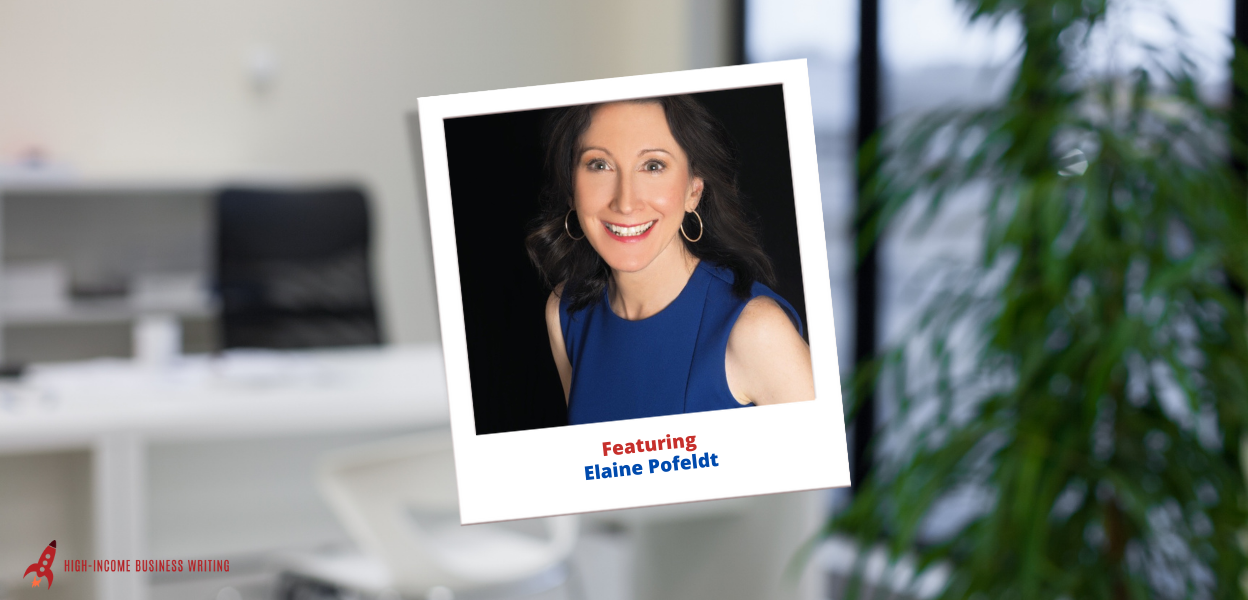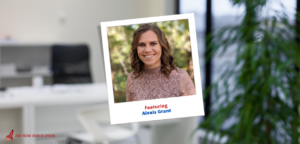You can do very well for yourself as a freelance writer, copywriter or marketing consultant.
But as a one-person business, there’s a limit to how much you can earn working for clients.
Consequently, many ambitious and creative professionals eventually have to ask: how they can scale their business to seven figures—without creating a ton of headaches or burning out?
In today’s podcast episode, business journalist Elaine Pofeldt returns to the show to offer her ideas and advice for successfully creating a microbusiness—that is, a business with no more than 20 employees (including yourself) and a handful of independent contractors.
Elaine shares where to find inspiration for your venture, how to test your ideas, and how to make time to launch and grow your microbusiness.
I hope this thought-provoking conversation inspires you to think differently about your current business—and where you can take it.
The notes that follow are a very basic, unedited summary of the show. There’s a lot more detail in the audio version. You can listen to the show using the audio player below. Or you can subscribe on Apple Podcasts, Spotify, Stitcher, Google Podcasts, Amazon Music or wherever you listen to podcasts.


High-Income Business Writing with Ed Gandia
#289: Elaine Pofeldt on Creating a High-Revenue Microbusiness
Tell us a bit about yourself and your business
Elaine Pofeldt is an independent journalist and speaker who specializes in entrepreneurship and careers. She started as a freelance journalist in 2007. She realized she needed to diversify when the recession hit, which got her into content marketing and ghost writing.
Today, she has published two books: Tiny Business, Big Money and The Million-Dollar, One-Person Business.
What’s your definition of a high-revenue microbusiness?
A high-revenue microbusiness is a six-figure business (with $1 million as a aspirational goal).
Some writers earn $200-300K annually by working really, really hard, but they can’t get past that point.
How can writers increase their revenue when they’ve maxed out their capacity?
Start by tracking your time for a few weeks. You’ll be surprised at how much time you put into projects and tasks that don’t advance your goals. Consider which tasks you can outsource or drop.
Think proactively about what you do, and do NOT, want to do. You still have to pay your bills, but you can start to transition to tasks that are more financially and spiritually rewarding.
Paying attention to what resonates with your audience will help you find opportunities to create six-figure businesses without crushing yourself with work.
For examples, look at Brian Dean of Backlinko, Dana Derricks, and Laura Belgray.
Think about productizing your services or creating some kind of higher-ticket experience. You won’t reach the $1 million level if you only do project assignments.
Instead of selling your skill, you need to leverage your expertise in a different way by packaging it and selling it.
We have an advantage in this area because we are writers! We are better prepared that most to create these kinds of products.
Have you come across entrepreneurs who took their businesses in entirely new directions?
Jenna Kutcher was a wedding photographer. She started an Instagram feed about her family life.
She built a huge following and became an influencer. Today, she gets $10,000 per ad.
How many successful founders found their area of interest accidentally by paying attention to what came up, versus taking a more “scientific” approach?
There’s often a blending of the two approaches.
Kathy Goughenour, for example, started in sales, then blogging for realtors, and eventually moved into helping people build their businesses as virtual assistants.
Once you put your intention out there, you’ll start noticing things you hadn’t noticed before, which opens up new possibilities.
If you take an anxiety-ridden approach of trying to find something, it won’t open up your creative flow of ideas.
How can we test the market viability of our business ideas?
You can use traffic figure to see what catches attention. If you’re thinking of writing a book, for example, you could explore your idea via a series of blog posts. If you don’t get any traffic, then that might be a sign to revise your idea.
For example, Jason is an engineer in Toronto. He tests his product ideas by getting a GoDaddy website and putting up the prototype. He advertises it on Facebook ad and sees if anyone expresses interest. If no one does, he doesn’t pursue the product.
With something like an ebook or course, you can promote it and gage the demand by preorders. If only a few people are willing to preorder the book, you can drop the idea and refund the orders.
It’s a way to test the waters before putting lots of time into developing it.
How can we find the cash to fund these ventures?
Preorders is a common way. Crowd funding might also be an option.
Grant funding may also be available. Many grants became available during the pandemic for hard-hit sectors.
Having a good credit score will also help you secure funding at better rates.
How do we make the time to grow our businesses when we’re already maxed out?
A few different strategies are to:
- Automate repetitive tasks.
- Outsource some of your tasks to contractors, e.g. bookkeeping, social media.
- Hire employees.
The right virtual assistant can fulfill a number of roles, from managing your website to bookkeeping to publishing your newsletter.
You may also need to schedule specific periods of time to work on your business idea, otherwise you’ll never get around to it.
Tell us about your new book
Elaine’s new book is Tiny Business, Big Money: Strategies for Creating a High-Revenue Microbusiness. It looks at the steps it takes to scale and how different entrepreneurs have done it.
She interviews almost 60 entrepreneurs, and they share their secrets with her.
Elaine’s website: https://www.elainepofeldt.com
By the way… whenever you’re ready, here are 3 ways I can help you grow your freelance business:
1. Grab a free copy of my book.
It’s called Earn More in Less Time: The Proven Mindset, Strategies and Actions to Prosper as a Freelance Writer. The title says it all. 😉 — Click Here
2. Join my implementation program and be a case study.
I’m putting together a new implementation group this month. If you’re earning $5k+/month (or the part-time equivalent) from your freelance business … and you’d like to grow your income quickly with better clients … just email me at ed@b2blauncher.com
3. Work with me privately.
If you’re a 6-figure writer who’s trying to earn more in less time, with less stress, I might be able to help you get there faster than you think. Just email me at ed@b2blauncher.com and put “Breakthrough” in the subject line, and I’ll get back to you with more details.






